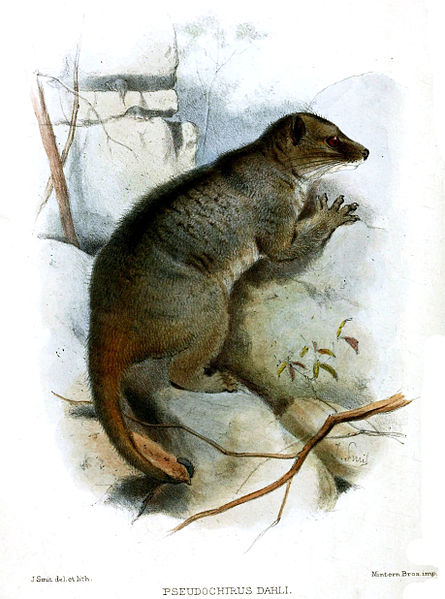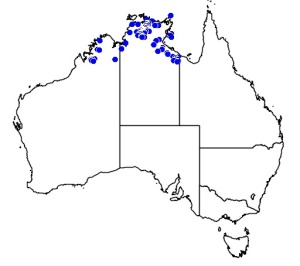Colours
Distinguishing features
The rock-haunting ringtail possum has one of the shortest tails of all ringtail possums, and at its end it is hairless and scaly. It has a stocky build and is mostly grey in colour.
It is grey to reddish-grey in colour on the back, while its underside is a light cream colour. It has white hair patches underneath its small, round ears and both above and below the eyes. A mid-dorsal stripe runs from the crown of the head to the middle of the back. Like other possums, it has a prehensile tail, adapted for grasping especially by wrapping around. However, the tail is unique in its appearance compared to that of other possums as it is covered with fur only halfway down. (Wikipedia)
Size
- Size data has not been obtained.
Synonyms
Distribution
Distribution and habitat preferences
It is found in rocky escarpments in the Kimberley, Arnhem Land and Gulf of Carpentaria across Western Australia and Northern Territory and just passing the Queensland border. It is also found on Groote Eylandt.
The rock-haunting ringtail possum lives exclusively in rocky outcrops and prefers areas with large boulders and deeply fissured rock. It uses the crevices to hide by just sticking its head into the crevice with the body exposed. It is strictly nocturnal; it only moves out of it sheltered rock crevices to climbing trees to feed at night. It does not make a nest and has been observed occasionally to be sleeping in well protected rock ledges during the day. This suggests a high level of adaptation to a terrestrial existence. Indicators of a reduction in arboreal adaptation are shorter legs, shorter claws, shorter tail and a slightly longer snout. (Wikipedia)

